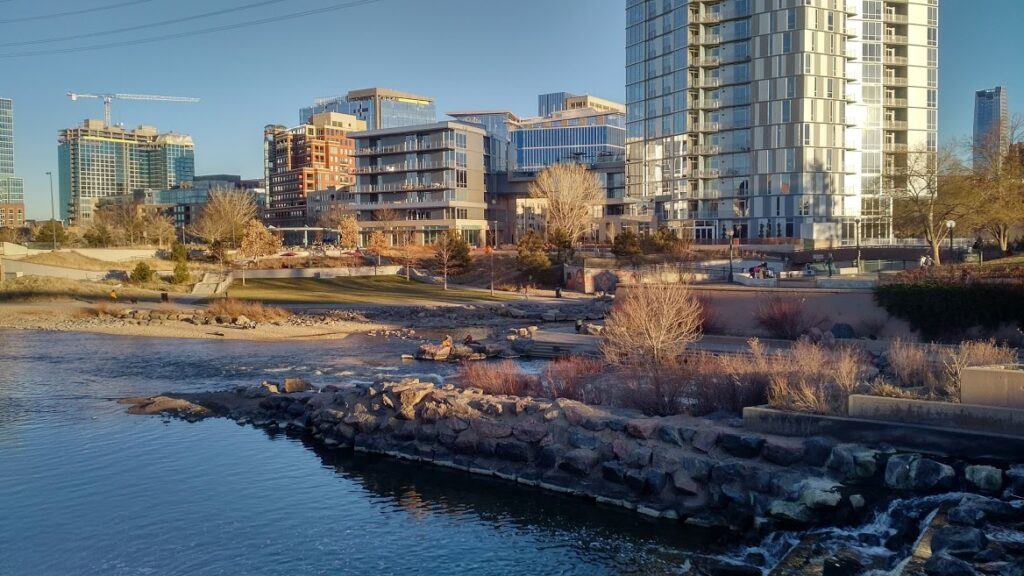I’ve spent the majority of my career working in the field of affordable housing, trying to provide safe and decent homes for the rapidly increasing percentage of our population who cannot afford it, especially here in Colorado. In what I thought was an unrelated move, I have spent the last few years serving on the Board of the Colorado Water Trust, a nonprofit devoted to utilizing market-based tools to restore water to Colorado’s streams and rivers in need. And while I still know a whole lot less about the landscape and economics of water than I do housing, what has become clear to me are the many parallels between these two worlds.
Colorado, known for its breathtaking mountains and yes, beautiful streams and rivers, has seen an influx of people seeking a piece of the Rocky Mountain dream. However, as more individuals and families settle in the state, the demand for affordable housing continues to outstrip supply. The demands on our water system, driven primarily by population growth in Colorado and the Southwest, continue to grow at a pace that supply (in this case snow!) increasingly can’t keep up with.
In the housing market, several factors contribute to the supply and demand imbalance, some of them market-based and others policy-inflicted. High construction costs, limited availability of land (with access to water), and local zoning restrictions are some of the culprits. Similarly, the scarcity of water in Colorado can be attributed to a combination of market forces and policy (climate change is undoubtedly another huge driver, but we’ll ignore that one for now). Population growth, which in turn drives demand both through direct consumption of water (largely municipal providers) and indirect consumption through food consumption (agricultural users). On the policy side, because of our western “first in time, first in right” water rights structure, there are a lot of baked-in disincentives to using water more efficiently and a lot of trepidation that doing so will result in diminished value of water rights.
Both imbalances have far-reaching consequences and impacts on our neighbors and community as a whole. The shortage of affordable housing leads to skyrocketing rents and home prices, making it challenging for many low- and middle-income residents to find suitable accommodation near where they work, go to school, or have a network of family/friends. In a parallel vein, the increasing water shortage in Colorado directly affects people’s daily lives, and its impact is most dramatic, most immediate, and most apparent on those individuals and families with the fewest economic resources.
The challenges of housing and water in Colorado demonstrate the necessity of collaboration and innovation. Private and public sectors, community organizations, and concerned citizens must work together to find sustainable solutions. Innovative technologies and practices can help optimize resource allocation in both areas.
The biggest difference I see between housing scarcity and water scarcity in Colorado, however, is general awareness. The average resident of Colorado, whether they live in the Front Range or on the Western Slope, generally understands that we have a significant challenge with affordable housing. If you don’t struggle with the cost of housing yourself, odds are you know someone who does. However, I believe far too many residents, especially those of us up and down the populous Front Range, take our water for granted and don’t fully grasp the very dire supply and demand imbalances that exist in water. Most of us are unaware where the water in our taps, toilets, and hoses even comes from (hint: it’s largely the other side of the Continental Divide).
For real and meaningful changes to take place in sustaining and restoring our water systems in Colorado and throughout the West, the general population needs to be more aware of the increasingly dire situation we face out here in the arid West. And we need to be motivated to work together with our neighbors to do something about it before it’s too late. As hard as it is to build more housing, it’s a whole lot harder to build more water. It’s why I joined the Board and why I wrote this article. Please read up on water issues, do whatever you can to use less of it, and support great organizations helping us find the balance between healthy environments and communities like Colorado Water Trust.
 Brad Weinig
Brad Weinig
Board Vice President, Colorado Water Trust
Mountain Region Developer, Pennrose, LLC
